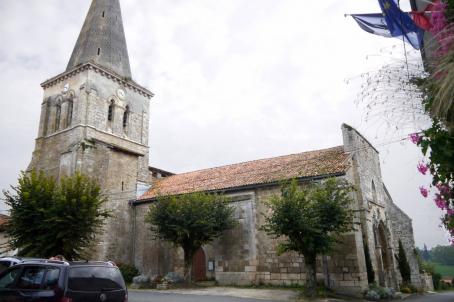Church of Saint-André
From the 12th century Romanesque basilica, former priory of the Benedictine abbey of Nanteuil, are preserved the western facade, classified as a historic monument in 1903, and the southern portal with its engaged columns. Many shadows remain about its history: ravaged by a fire in 1415, the church underwent several reconstruction campaigns during the 15th, 16th and 17th centuries.
About this building
The church has a rectangular and asymmetrical plan. Apart from the side chapels and the sacristy on the south side, the church consists of a nave and aisles vaulted by cross vaults and separated by two rows of seven pillars. The western façade is very structured and is presented as a gable.



